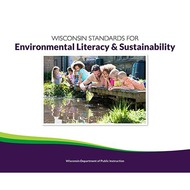Five-Year Average Global Temperature Anomalies from 1880 to 2010
(View Complete Item Description)This color-coded map displays a progression of changing five-year average global surface temperatures anomalies from 1880 through 2010. The final frame represents global temperature anomalies averaged from 2006 to 2010. The temperature anomalies are computed relative to the base period 1951-1980.
Material Type: Activity/Lab




















